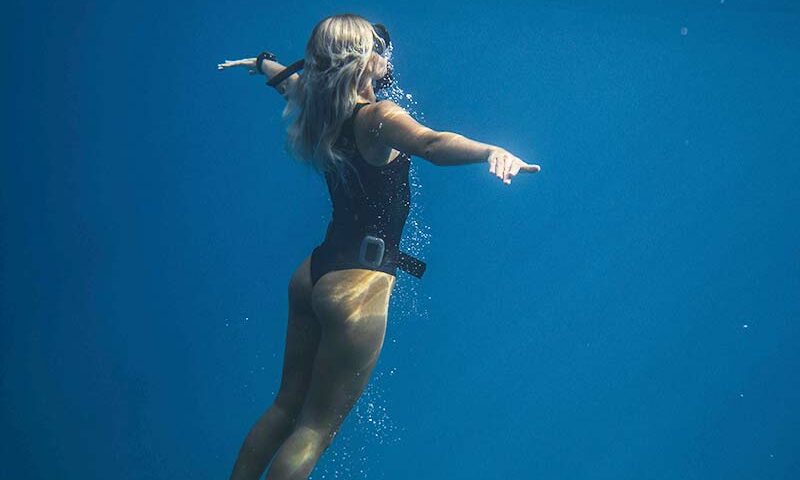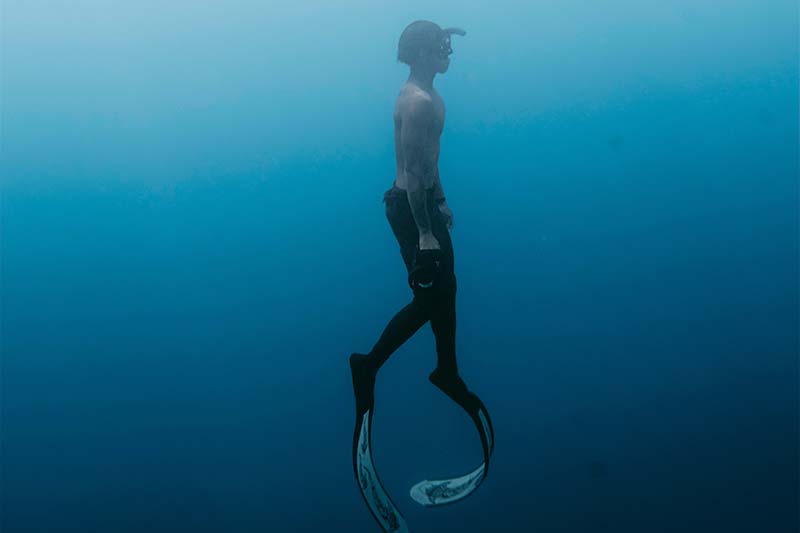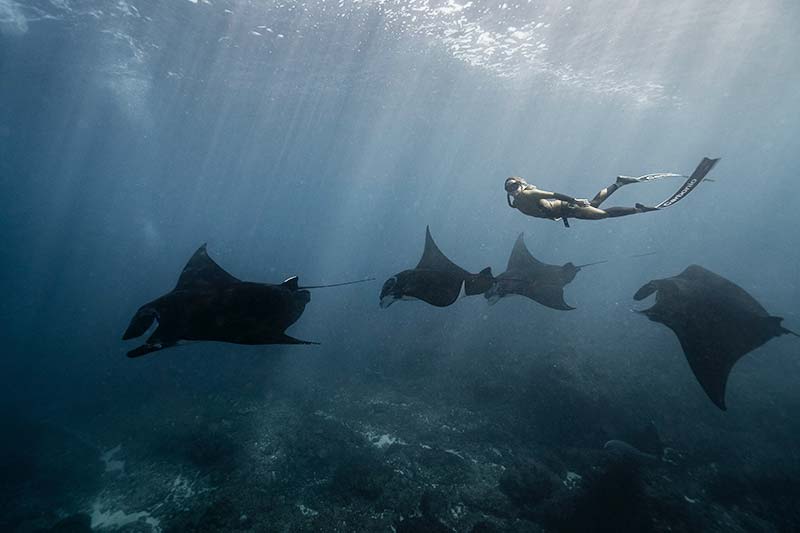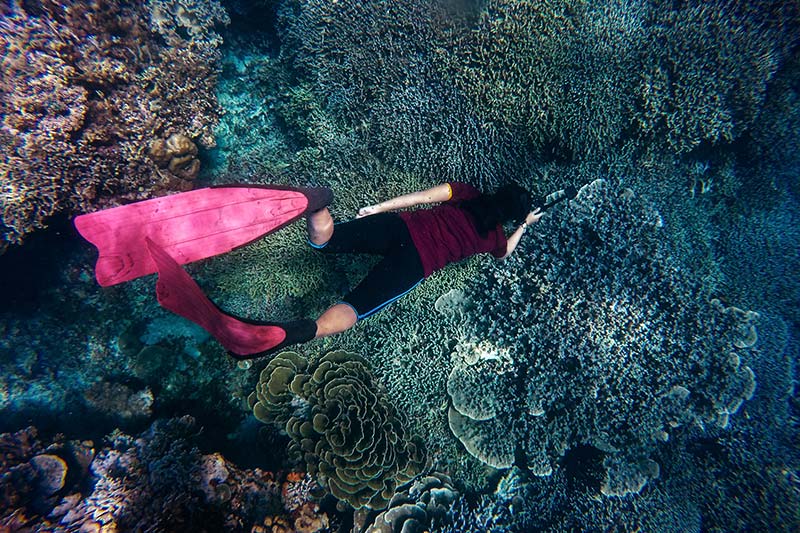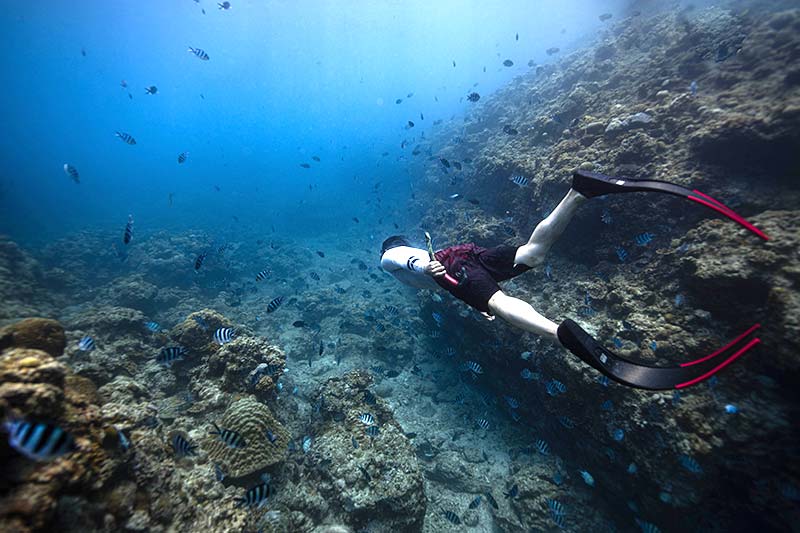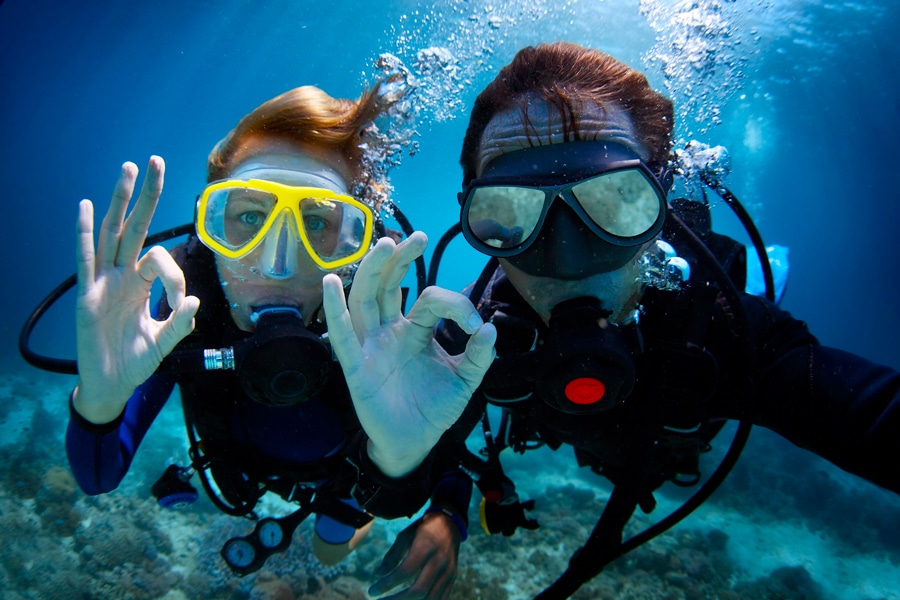1. What Are the Benefits of Freediving Breathing Techniques for A SCUBA Diver?
We all breathe, about 16 times per minute at rest. But perhaps you haven’t stopped to think about how it works. It turns out that our cells need oxygen to survive, and we obtain it when we inhale. At the same time, we need to get rid of carbon dioxide (CO2) particles, which we do when we exhale.
Now here’s the interesting part: if we don’t eliminate enough CO2 as it is produced, our brain tells our lungs to speed up breathing.
Yes, CO2 is the villain that makes us breathe faster! That’s why they tell SCUBA divers, “Never hold your breath.” Because if you do, you’ll only accumulate carbon dioxide in your body, and your brain won’t allow it! It will scream at you to ventilate faster, and that’s not what we want, because it means using more air, right?
Okay, but I want my tank air to last longer. How can I achieve that?
1.1. Benefits of apnea training to reduce air consumption
Good question! Let me tell you about the benefits of freediving breathing techniques training to reduce air consumption.
Excessive muscle movement, exposure to cold, and stress increase the production of CO2 in our bodies. So, if we want to make our breathing slower and reduce our air consumption, we need to relax, avoid sudden movements, and dive with proper insulation. But that’s not all, there’s an even more interesting way! By increasing lung capacity.
What does that mean? Simple: if we have larger and stronger lungs, we can manage air more efficiently and breathe fewer times. Ta-da! Apnea training and breath-holding techniques can help us in this task.
1.2. Breath-holding: other benefits for diving
Breathing like a freediver puts you in a natural state of relaxation in the parasympathetic nervous system. In fact, a 2013 study showed that freedivers had significantly lower levels of stress, anxiety, and negativity compared to non-practitioners of this sport. Bingo! We mentioned earlier that stress increases the production of CO2. So, apnea breathing techniques also help in that regard.
It increases self-awareness underwater. There’s a saying, “If you want to explore your outer world underwater, use a tank. If you want to explore your inner world underwater, don’t use it.”
Scuba divers do breathe underwater, but mastering freediving breathing techniques can clear the mind. They call it mindfulness. Just kidding. What’s not a joke is the fact that mental clarity while diving is vital. When you dive, you have to be focused to avoid mistakes.
Donald Noble, an expert from Emory University in the United States, helps us understand it better. freediving breathing techniques help us breathe slower and deeper. The sensation of chest expansion comes from a set of elastic sensors that measure lung growth.
When you exhale and your diaphragm relaxes, the movement of your chest presses against blood vessels, activating a second group of special sensors called baroreceptors found in our arteries.
They all send signals to the brain. And here’s the interesting part: when we breathe deeply, this constant and repetitive stimulation can synchronize activity in other brain regions. What does that mean? Slow and relaxing brain waves that lead you to a serenely alert state.
Freediving breathing not only reduces stress but also improves your mood. During this practice, your body releases neurotransmitters that make you feel good, such as adrenaline, noradrenaline, and dopamine.
Freedivers also efficiently utilize their oxygen, which is advantageous both in the water and on land. Optimal use of oxygen translates into more efficient breathing, a lower heart rate, lower blood pressure, increased blood flow to vital organs, and overall better health.




